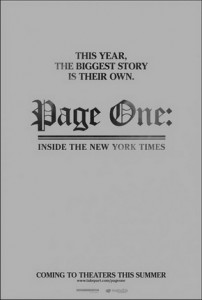‘The Help’ — Writer/Director Tate Taylor and Producer Chris Columbus
Posted on July 13, 2011 at 8:00 am
More from the set of “The Help:”
Tate Taylor, writer and director of the film, told us, “I grew up coming to Greenwood. It stopped in time in 1963. These homes, these locations, these trees – we put together a look book. They asked, ‘Where do you want to film, Vancouver?’ We gave the book to Spielberg and he went, ‘Wow.’ Louisiana has tax breaks – it is Southern, but has a very different feel.” So they came to Greenwood, which stood in for Jackson in 1963, and he brought along Mark Richter as the production designer because he was from the South — they had worked together as production assistants on a Gap catalogue photo shoot for $100 a day. Taylor said Northerners don’t understand much about the South. “I’ve been asked if we have malls here. They don’t understand why people are being so nice – What do they want?” He told us about adapting his friend’s novel. “I had to get the first 200 pages of the book into 30 pages of screenplay.” He had just one disagreement with Kathryn Stockett and admitted she was right. “People do not know about the Jim Crow laws. We had to leave that in.”
Chris Columbus, producer, described Greenwood as “In a sense, frozen in time. ‘The Reivers’ was shot here.” He said the production team was energized by the excitement of the community and pride. And they all appreciated “the friendliness – everyone knows what everyone else is doing.” The house where they were filming that day (Elizabeth Leefolt’s home in the movie) “was built around 1958 but it had to have a shimmer of newness about it.”
“I knew Tate because his sister’s kid and my kid were in school together and were friends. I saw his short film, ‘The Chicken Party” and we stayed in touch. He sent me the manuscript and I said, ‘It’s a woman’s book’ and gave it to my wife.” But it turned out to be more than that. He urged the studio to use Taylor even though he was a newcomer. “He seems to really know this world inside out.” And he told us that it was important to have accurate detail but keep the focus on the story: “History is the backdrop. It’s all about the characters. You don’t want it to be a PBS special. What was going on creates a sense of tension and danger. When there’s too much Hollywood [casting big name stars) the authenticity disappears.” Columbus, one of Hollywood’s most successful directors (including the first two Harry Potter films) told us he wanted to be in Greenwood to see the filming. “I’m here almost every day because I love it. It is very inspirational. Why can’t we go back to making films that inspire us? Times really haven’t changed that much in terms of the way we deal with each other. And I love to be working on a movie where you really want to hate the villain. It’s learning an entirely new culture, accent, food. There was a time when the studio was talking about a cookbook, but the food is horrendous!”


